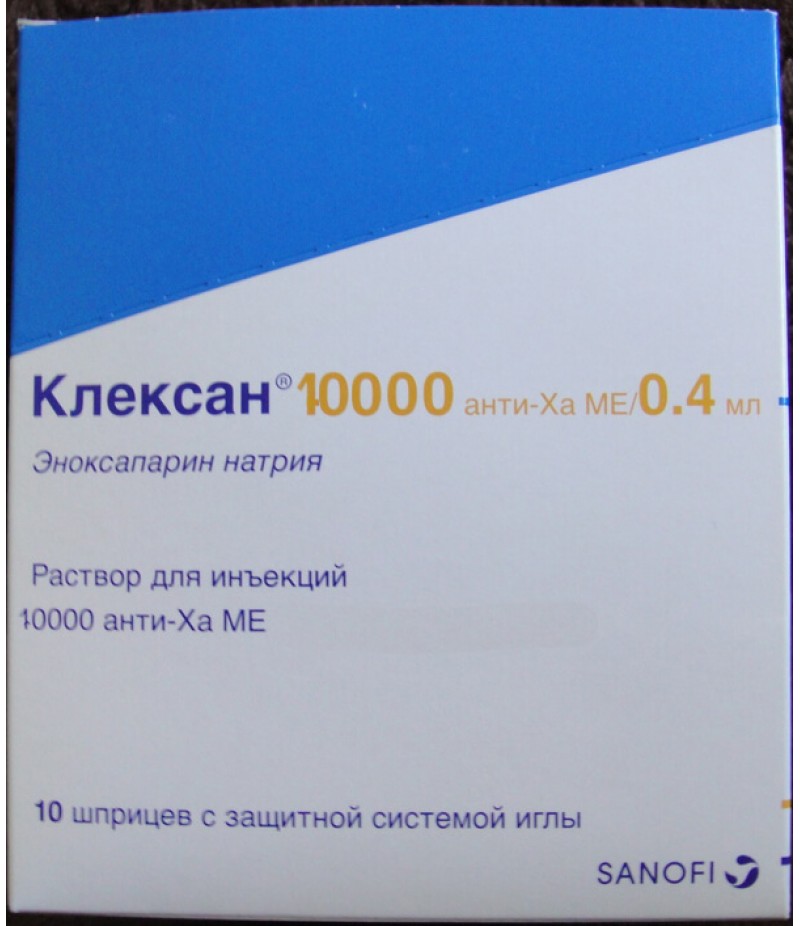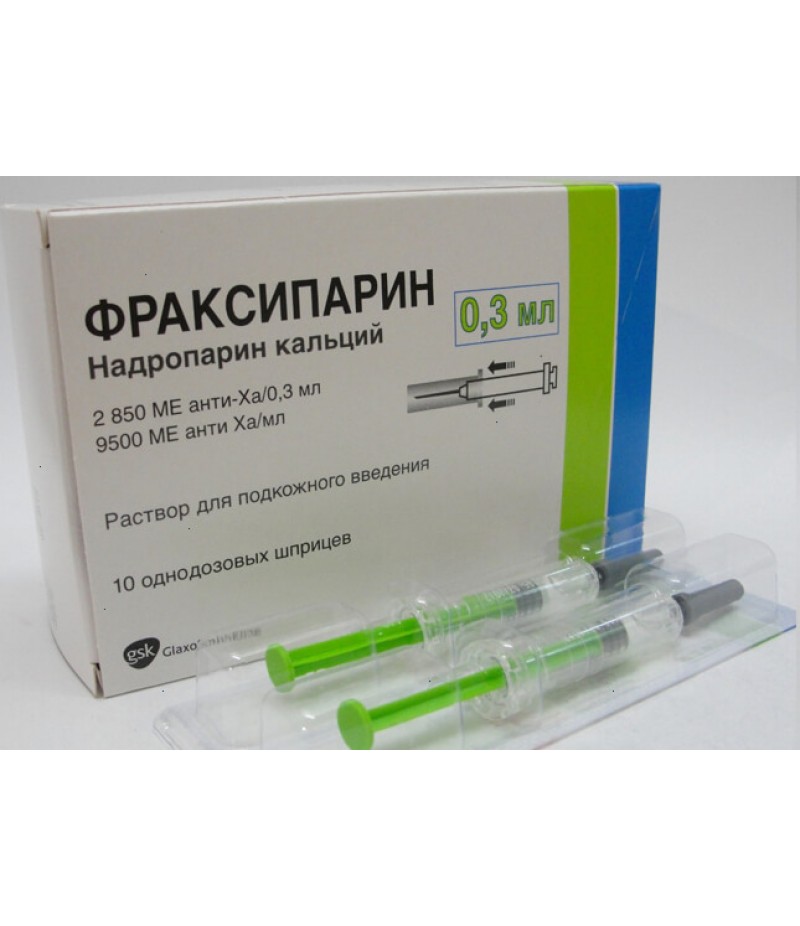Clexane 10000 antiha me/ml 0.4ml #10
- $98.74
- 2 or more $97.30
- 3 or more $95.99
- Availability:In Stock
Clexane user manualYou can buy Clexane hereCompositionIn one syringe is contained depending on the dosage: 10,000 anti-Ha IU, 2000 anti-Ha IU, 8,000 anti-Ha IU, 4,000 anti-Ha IU, or 6,000 anti-Ha ME enoxaparin sodium.Form of issue..
Clexane user manual
You can buy Clexane here
Composition
In one syringe is contained depending on the dosage: 10,000 anti-Ha IU, 2000 anti-Ha IU, 8,000 anti-Ha IU, 4,000 anti-Ha IU, or 6,000 anti-Ha ME enoxaparin sodium.
Form of issue
The drug is a clear solution for injections of a colorless or yellowish color.
1.0 ml, 0.8 ml, 0.6 ml, 0.4 ml or 0.2 ml of such solution in a glass syringe, two such syringes in a blister, one or five such blisters in a paper bundle.
pharmachologic effect
Clexane has an antithrombotic effect.
Pharmacodynamics and pharmacokinetics
Pharmacodynamics
Clexane INN (international non-proprietary name) enoxaparin. The drug is a low molecular weight heparin with a molecular weight of about 4500 daltons. Obtained by the method of alkaline hydrolysis of heparin benzyl ester extracted from pig intestinal mucosa.
When used in prophylactic doses, the drug slightly changes the APTT, has almost no effect on platelet aggregation and binding to fibrinogen. In therapeutic doses, enoxaparin increases the APTT by 1.5-2.2 times.
Pharmacokinetics
After systematic hypodermic injections of enoxaparin sodium 1.5 mg per kilogram of body weight once a day, the equilibrium concentration occurs after 2 days. Bioavailability with subcutaneous injection reaches 100%.
Enoxaparin sodium is metabolized in the liver by desulfating and depolymerizing. The resulting metabolites have very low activity.
The half-life is 4 hours (single administration) or 7 hours (repeated administration). 40% of the drug is excreted through the kidneys. Excretion of enoxaparin in elderly patients is delayed as a result of worsening kidney function.
In persons with kidney damage, the clearance of enoxaparin is reduced.
Indications for use
This drug has the following contraindications:
prevention of thrombosis and embolism of veins after surgical interventions;
therapy of deep vein thrombosis complicated or not complicated by pulmonary arterial thromboembolism;
prevention of thrombosis and embolism of veins in long-term patients on bed rest, due to acute therapeutic pathology (chronic and acute heart failure, severe infection, respiratory failure, acute rheumatic diseases);
prevention of thrombosis in the system of extracorporeal blood flow during hemodialysis;
angina therapy and infarction without a Q wave;
acute infarction therapy with an increase in the ST segment in people who need medical treatment.
Contraindications
Allergy to the components of the drug, and other low molecular weight heparins.
Diseases with an increased risk of bleeding, such as an aneurysm, threatening abortion, bleeding, hemorrhagic stroke.
It is forbidden to use Clexane during pregnancy in women with artificial heart valves.
Age is less than 18 years (safety and efficacy not established).
Use with caution in the following cases:
diseases accompanied by hemostasis disorders (hemophilia, hypocoagulation, thrombocytopenia, von Willebrand disease), pronounced vasculitis;
a stomach ulcer or 12 duodenal ulcer, erosive and ulcerative lesions of the digestive tract;
recent ischemic stroke;
severe arterial hypertension;
hemorrhagic or diabetic retinopathy;
diabetes mellitus in severe forms;
recent childbirth;
recent neurologic or ophthalmologic intervention;
performance of epidural or spinal anesthesia, spinal puncture;
bacterial endocarditis;
intrauterine contraception;
pericarditis;
damage to the kidneys or liver;
severe trauma, extensive open wounds;
joint reception with drugs affecting the hemostasis system.
Side effects
As with other anticoagulants, there is a risk of bleeding, especially with invasive procedures or the use of drugs that affect hemostasis. If bleeding is detected, the medication should be discontinued, the cause of the complication found and the appropriate treatment should be started.
When the drug was used against the background of epidural or spinal anesthesia, postoperative use of penetrating catheters, cases of the appearance of neuroaxial hematomas, leading to neurological diseases of different severity, including irreversible paralysis, were revealed.
Thrombocytopenia in the prevention of venous thrombosis in patients with surgical profile, treatment of deep venous thrombosis and myocardial infarction with an increase in the ST segment occurred in 1-10% of cases and in 0.1-1% of cases in the prevention of venous thrombosis in patients who comply with bed rest and undergo therapy of myocardial infarction and angina pectoris.
After the administration of Clexane, the appearance of a hematoma at the injection site may occur under the skin. In 0.001% of cases, local necrosis of the skin developed.
Skin and systemic hypersensitivity reactions, including anaphylactic ones, rarely appeared.
An asymptomatic temporary increase in the concentration of hepatic enzymes has also been described.
Instructions for use Clexane
Instructions for use Clexane says that the drug is injected deeply subcutaneously in the lying position of the patient.
How to stab Clexane?
The drug should be injected into the left and right lateral areas of the abdomen in turn. To perform the injection, it is necessary to perform such manipulations as to open the syringe, expose the needle and insert it vertically to full length, into the skin fold, previously collected by the thumb and index finger. The fold is released after the injection. It is not recommended to massage the injection site.
The drug is not allowed to be administered intramuscularly.
Scheme of introduction. They produce 2 injections a day with an exposure of 12 hours. The dose for one administration should be 100 anti-Ha IU per kilogram of body weight.
Patients with an average risk of thrombosis need a dose of 20 mg once a day. The first administration is performed 2 hours before the operation.
Patients with a high risk of thrombosis are advised to administer 40 mg of Clexane once a day (first injection 12 hours before surgery) or 30 mg twice daily (the first administration 13 to 24 hours after surgery). The duration of therapy on average is a week or 10 days. If necessary, treatment can continue until there is a risk of thrombosis.
Treatment of deep venous thrombosis. The drug is administered at a rate of 1.5 mg per kilogram of body weight once a day. The course of therapy usually lasts 10 days.
Prevention of thrombosis and embolism of veins in patients on bed rest caused by acute therapeutic illnesses. The required dose of the drug is 40 mg once a day (duration 6-14 days).
Overdose
Accidental overdose can lead to severe hemorrhagic complications. When taking orally, the absorption of the drug into the systemic circulation is unlikely.
As a neutralizing agent, slow administration of protamine sulfate intravenously was shown. One mg of protamine neutralizes one mg of enoxaparin. If more than 12 hours have elapsed from the onset of an overdose, then administration of sulfate protamine is not required.
Interaction
Clexane should not be mixed with other drugs. Also, one should not alternate the use of Clexane and other low molecular weight heparins.
When used with acetylsalicylic acid, 40 kDa dextran, non-steroidal anti-inflammatory drugs, clopidogrel and ticlopidine, thrombolytics or anticoagulants, the risk of bleeding may increase.
Storage conditions
Keep away from children. Store at temperatures up to 25 ° C.
Shelf life - Three years.
special instructions
When using the drug for the purpose of prevention of a tendency to increase the risk of bleeding is not revealed. When using Clexane for therapeutic purposes, there is a risk of bleeding in the elderly. In these cases careful monitoring of the patient is necessary.
Clexane does not affect the ability to drive.
Children
Contraindicated for persons under the age of 18 years.
Clexane during pregnancy and lactation
It is forbidden (except when the benefits for the mother are higher than the risk for the fetus) apply Clexane during pregnancy. The consequences can be unpredictable, since there is no precise information on the effect of using Clexane during pregnancy on her course.
If it is necessary to use Clexane, breastfeeding should be interrupted for the duration of treatment.
Reviews of Clexane
Since the beginning of the use of the drug in clinical practice, Clexane has proved well both among doctors and among patients. There are very few reports of an allergy to the drug.


